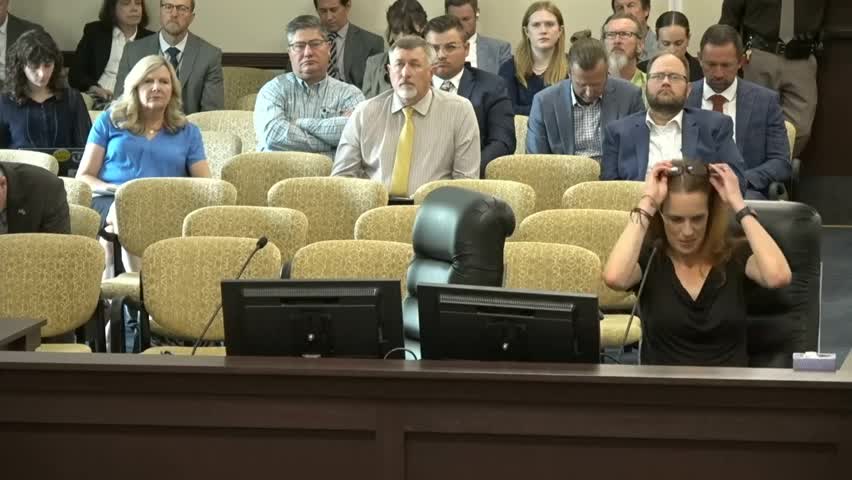Cloud seeding program aims to combat water scarcity
June 19, 2024 | Natural Resources, Agriculture, and Environment Interim Committee, Utah Interim, Utah Legislative Branch, Utah

This article was created by AI summarizing key points discussed. AI makes mistakes, so for full details and context, please refer to the video of the full meeting. Please report any errors so we can fix them. Report an error »

In a recent government meeting, officials discussed the ongoing cloud seeding operations in Utah, emphasizing the program's significance in addressing the state's increasing water demand amid climate variability. Candace Hazeniger, along with meteorologist Jonathan Jennings, presented detailed insights into the cloud seeding process, which aims to enhance precipitation by introducing substances like silver iodide into clouds containing supercooled liquid water.
Jennings explained that cloud seeding is particularly crucial for augmenting mountain snowpack, with operations typically running from November to late April. The cost-effectiveness of cloud seeding was highlighted, with estimates suggesting it can produce additional water at a rate of $3 to $6 per acre-foot. The program has reportedly led to a 6 to 11% increase in snowpack and an estimated 200,000 acre-feet of additional streamflow, translating to significant economic benefits for the state.
Concerns regarding environmental impacts were addressed, with Jennings noting that silver iodide, used since the 1940s, is considered safe due to its insolubility in water and low concentration levels, which are below EPA standards for drinking water. The meeting also touched on the use of liquid propane in cloud seeding, which is still under research but shows promise for enhancing precipitation efficiency.
Bryce Bird, director of the Utah Division of Air Quality, provided context on air quality monitoring related to cloud seeding, assuring that the particles used in the process are expected to fall quickly as precipitation and do not contribute to air pollution during inversion periods.
Public concerns about \"chemtrails\" were raised, with officials clarifying that cloud seeding operations are distinct from contrails produced by aircraft at high altitudes. The meeting concluded with a commitment to transparency and ongoing public engagement regarding cloud seeding practices and their environmental implications.
Jennings explained that cloud seeding is particularly crucial for augmenting mountain snowpack, with operations typically running from November to late April. The cost-effectiveness of cloud seeding was highlighted, with estimates suggesting it can produce additional water at a rate of $3 to $6 per acre-foot. The program has reportedly led to a 6 to 11% increase in snowpack and an estimated 200,000 acre-feet of additional streamflow, translating to significant economic benefits for the state.
Concerns regarding environmental impacts were addressed, with Jennings noting that silver iodide, used since the 1940s, is considered safe due to its insolubility in water and low concentration levels, which are below EPA standards for drinking water. The meeting also touched on the use of liquid propane in cloud seeding, which is still under research but shows promise for enhancing precipitation efficiency.
Bryce Bird, director of the Utah Division of Air Quality, provided context on air quality monitoring related to cloud seeding, assuring that the particles used in the process are expected to fall quickly as precipitation and do not contribute to air pollution during inversion periods.
Public concerns about \"chemtrails\" were raised, with officials clarifying that cloud seeding operations are distinct from contrails produced by aircraft at high altitudes. The meeting concluded with a commitment to transparency and ongoing public engagement regarding cloud seeding practices and their environmental implications.
View full meeting
This article is based on a recent meeting—watch the full video and explore the complete transcript for deeper insights into the discussion.
View full meeting

